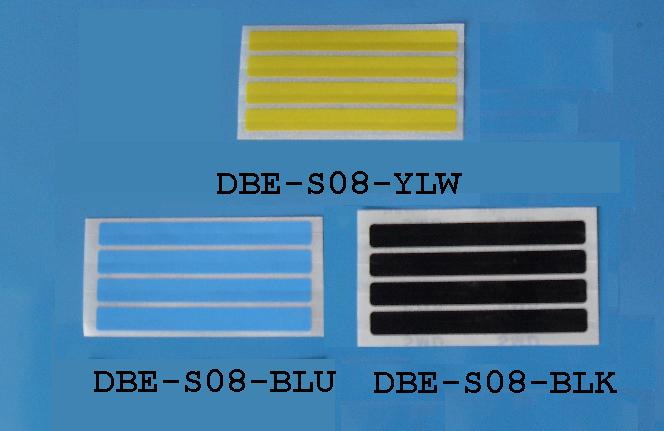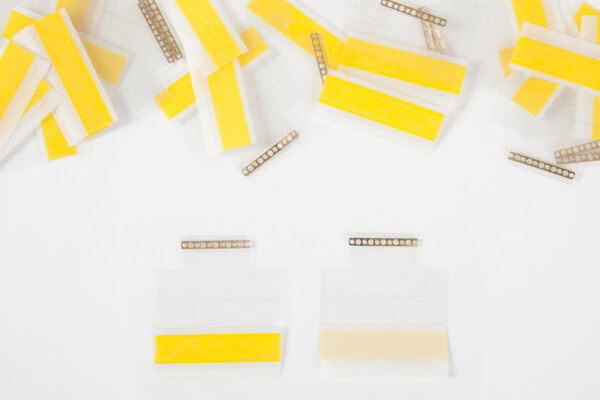Content Menu
● Introduction to SMT Splicing Tape
● Benefits of Using SMT Splicing Tape
● Types of SMT Splicing Tape
● Factors to Consider When Choosing SMT Splicing Tape
● Best Practices for Using SMT Splicing Tape
● Common Issues and Solutions
● Techniques of SMD Splicing
● Tools Required for SMT Reel Splicing
● Advanced Technologies in SMT Splicing
● Environmental Considerations
● Quality Control Measures
● Conclusion
● FAQ
>> 1. What is SMT splicing tape used for?
>> 2. What are the main benefits of using SMT splicing tape?
>> 3. How do I choose the right type of SMT splicing tape?
>> 4. What tools are required for SMT reel splicing?
>> 5. How do I ensure proper application of SMT splicing tape?
In the realm of Surface Mount Technology (SMT), the efficiency and reliability of manufacturing processes are crucial for maintaining high production standards. One key component in achieving these goals is the use of SMT tape and reel splicing. This technique involves joining two reels of component tape to create a continuous feed for automated assembly processes, thereby minimizing downtime and enhancing productivity. At the heart of this process is SMT splicing tape, a specialized adhesive tape designed to securely bond the ends of component reels together. Choosing the right splicing tape is essential for optimizing SMT applications, and this article will guide you through the selection process.

Introduction to SMT Splicing Tape
SMT splicing tape is a critical tool in modern electronics manufacturing. It ensures that component reels can be seamlessly joined, allowing for continuous production without interruptions. This tape is made from high-quality adhesive materials that provide a strong bond between the reels while being flexible enough to allow smooth movement through automated assembly equipment.
Benefits of Using SMT Splicing Tape
The use of SMT splicing tape offers several advantages over traditional methods of joining component reels:
- Increased Efficiency: By creating a continuous feed, SMT splicing tape reduces the need for frequent reel changes, thereby enhancing the throughput of pick-and-place machinery.
- Cost Savings: Utilizing 100% of the components on a reel minimizes waste and lowers overall production costs.
- Improved Quality: Automated splicing ensures precise alignment, reducing errors in component placement and enhancing product quality.
- Reduced Downtime: Continuous operation without interruptions leads to higher productivity levels.
Types of SMT Splicing Tape
There are several types of SMT splicing tapes available, each designed for specific applications:
- Single-Sided SMT Splicing Tape: This type is used for high-speed assembly processes that require a continuous feed of components. It is available in clear or colored backing and is suitable for a wide range of component sizes.
- Double-Sided SMT Splicing Tape: Designed for low-speed assembly processes, this tape joins two component reels together, creating a continuous feed. It is also available in clear or colored backing.
- Conductive SMT Splicing Tape: This type provides a conductive path between the reels, making it ideal for assembly processes requiring electrical continuity.
Factors to Consider When Choosing SMT Splicing Tape
When selecting the right SMT splicing tape for your application, several factors should be considered:
- Component Size and Type: Ensure the tape is compatible with the components being used. Different tapes may be required for different component sizes or types.
- Speed of Assembly Process: For high-speed processes, single-sided tape is typically preferred, while double-sided tape is better suited for low-speed processes.
- Environmental Conditions: Choose a tape that performs well under the specific temperature and humidity conditions of your assembly process. Some tapes are designed to withstand extreme temperatures or humidity levels.
- Adhesive Strength: Ensure the tape provides sufficient adhesive strength to hold the reels securely in place during the assembly process.
Best Practices for Using SMT Splicing Tape
To ensure optimal performance and longevity of your SMT splicing tape, follow these best practices:
- Proper Splicing Technique: Always follow the manufacturer's instructions for splicing and joining component reels. Improper technique can lead to weak bonds or misaligned components.
- Proper Storage: Store the tape in a cool, dry place to maintain its adhesive strength. Avoid exposing the tape to direct sunlight or moisture.
- Proper Application: Apply the tape evenly and firmly, avoiding excessive force that could damage components. Ensure the surface is clean and dry before applying the tape.

Common Issues and Solutions
While SMT splicing tape is generally reliable, issues can arise during the splicing process:
- Tape Not Sticking: Ensure the surface is clean and dry before applying the tape. If the issue persists, the tape may be expired or damaged. Check the expiration date and storage conditions.
- Components Not Aligned: Check that the reels are aligned before splicing. If the issue persists, the tape may not be suitable for the component size or type being used. Consider using a different type of tape.
Techniques of SMD Splicing
SMD splicing can be performed manually or automatically:
- Manual Splicing: This traditional method requires operators to manually join SMD components by cutting the carrier tape and sticking the ends together using an SMD splice connector. It demands skill and precision.
- Automatic Splicing: Modern manufacturing facilities use automatic SMD splice machines to automate the process, increasing accuracy and efficiency. These machines can handle a wide range of component sizes and types.
Tools Required for SMT Reel Splicing
To successfully splice SMT reels, you will need several key tools:
- SMT Splice Tool: Designed to crimp and join the ends of the carrier tapes securely.
- Splice Tape: Specialized adhesive tape used to bond the two ends of the component reels together.
- Cutting Tool: For trimming the carrier tape accurately before splicing.
- Hold Down Units: These help stabilize the carrier tape during the splicing process, ensuring precise alignment.
Advanced Technologies in SMT Splicing
Recent advancements in SMT splicing include the integration of automation and robotics. These technologies enhance precision and speed, allowing for more efficient production processes:
- Automated Splicing Machines: These machines can automatically detect and align the ends of the reels, apply the splicing tape, and perform quality checks.
- Robotic Assistance: Robots can assist in handling and positioning the reels, reducing manual labor and increasing accuracy.
Environmental Considerations
When selecting SMT splicing tape, it's also important to consider environmental factors:
- Temperature Resistance: Ensure the tape can withstand the temperature fluctuations in your assembly environment.
- Humidity Resistance: Choose a tape that maintains its adhesive strength in varying humidity conditions.
- Chemical Resistance: If chemicals are used in your assembly process, select a tape that is resistant to these substances.
Quality Control Measures
Implementing quality control measures is crucial to ensure the reliability of the splicing process:
- Visual Inspection: Regularly inspect the spliced reels for any signs of misalignment or weak bonds.
- Performance Testing: Conduct periodic tests to ensure the spliced reels function correctly during assembly processes.
- Training Personnel: Ensure that operators are well-trained in the proper use of SMT splicing tape and splicing techniques.
Conclusion
Choosing the right SMT splicing tape is crucial for optimizing your SMT applications. By understanding the different types of tapes available and considering factors such as component size, assembly speed, and environmental conditions, you can ensure efficient and reliable production processes. Following best practices for tape application and storage will further enhance performance and longevity. As technology continues to evolve, integrating automation and advanced materials will play a significant role in enhancing the efficiency and quality of SMT splicing processes.

FAQ
1. What is SMT splicing tape used for?
SMT splicing tape is used to join the ends of two component reels together, creating a continuous feed for automated assembly processes. This ensures efficient and uninterrupted production.
2. What are the main benefits of using SMT splicing tape?
The main benefits include increased efficiency, cost savings, improved quality, and reduced downtime. It allows for continuous production without interruptions, minimizing waste and enhancing product quality.
3. How do I choose the right type of SMT splicing tape?
Choose the tape based on the speed of your assembly process, component size and type, and environmental conditions. For high-speed processes, single-sided tape is typically best, while double-sided tape is better for low-speed processes.
4. What tools are required for SMT reel splicing?
You will need an SMT splice tool, splice tape, a cutting tool, and hold down units. These tools ensure that the ends of the carrier tapes are securely joined and properly aligned.
5. How do I ensure proper application of SMT splicing tape?
Ensure the surface is clean and dry, apply the tape evenly and firmly, and avoid excessive force that could damage components. Follow the manufacturer's instructions for splicing and joining component reels.




















